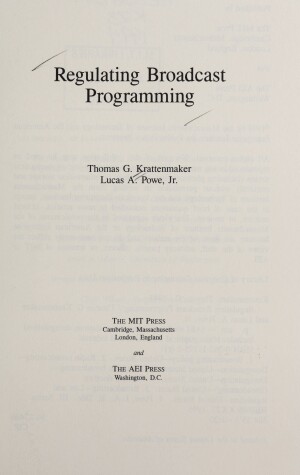AEI Studies in Telecommunications Deregulation
1 total work
Regulating Broadcast Programming
by Thomas Krattenmaker, Lucas A. Powe, and Lucas A. Powe Jr
Published 1 November 1994
"Broadcast content regulation has failed miserably, and will continue to fail," claim the authors of "Regulating Broadcast Programming", in their comprehensive review of past and present efforts to regulate the content of radio and television. They argue that such regulation should be based on the same principles used for print media, where control of editorial content lies in private hands instead of the government. Access - the ability to reach the willing recipient by the communicator willing to pay the costs - should not be controlled by a third party. In a gradually unfolding analysis, Krattenmaker and Powe look at the wide variety of constitutional, historical, economic and common sense issues that content control generates. Chapter one, covering the period from 1912 to the early 1940s, explains the origins of US federal regulation of the broadcast industry and why some regulatory strategies were adopted and others discarded. Chapter two explains how normative economic theory might portray the appropriate role for governmental regulation of a peculiar type of product called a "public good."
The four chapters that follow review the principal content regulations - regulations designed to expand programme choices and those designed to excise certain types of programmes - and the statutory and constitutional standards under which broadcast licensees operate. The final four chapters provide an extensive and detailed critical analysis of broadcast content regulation, culminating in the authors' proposal for reinventing broadcast regulation. In the concluding chapter they outline a radically different set of legal and regulatory policies and principles for regulating broadcast programme content. These are the rules used for governing all other mass media in the United States.
The four chapters that follow review the principal content regulations - regulations designed to expand programme choices and those designed to excise certain types of programmes - and the statutory and constitutional standards under which broadcast licensees operate. The final four chapters provide an extensive and detailed critical analysis of broadcast content regulation, culminating in the authors' proposal for reinventing broadcast regulation. In the concluding chapter they outline a radically different set of legal and regulatory policies and principles for regulating broadcast programme content. These are the rules used for governing all other mass media in the United States.
